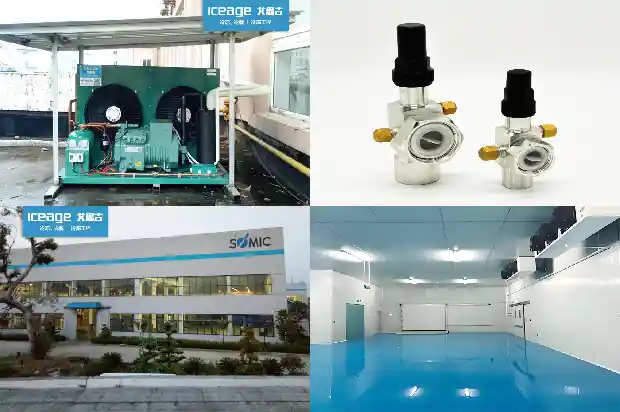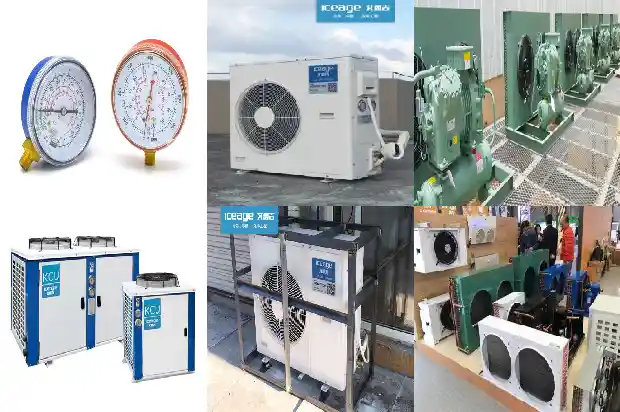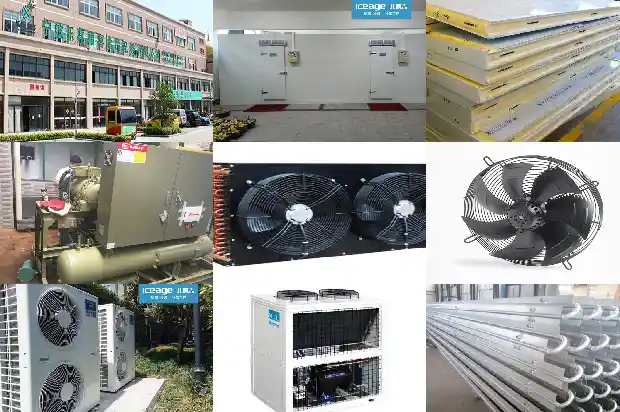What are the Reasons and Hazards of Uneven Liquid Distribution in the Refrigeration System?
2025-03-12
If the liquid distribution head distributes unevenly, it will cause an excessive amount of refrigerant in some branches, leading to the frosting of the evaporator. As a result, the evaporation is incomplete, which reduces the refrigeration capacity of the system and may also cause liquid carryover in the suction. There are many reasons for uneven liquid distribution, and the common reasons are all mentioned in this article. Let's first enter this article through a cold storage maintenance case from a peer. This case is a typical one caused by uneven liquid distribution, and the final result is disastrous!
Case: This system is composed of three parallel piston compressors, providing a cold source for four air coolers in two cold storages, and the storage temperature is maintained at around -23 degrees. The customer has a complete record of maintenance.
The evaporator freezes;
Oil pressure protection;
Multiple evaporator fan motors are burned out;
The compressor has large vibration and noise;
The compressor valve plate and connecting rod are broken;
The compressor is short of oil;
The system is blocked by ice;
The lubricating oil has carbon deposits and turns black;
All compressor pistons are impacted and become pitted, and the valve plates and connecting rods are broken.

The evaporator freezes;
Oil pressure protection;
Multiple evaporator fan motors are burned out;
The compressor has large vibration and noise;
The compressor valve plate and connecting rod are broken;
The compressor is short of oil;
The system is blocked by ice;
The lubricating oil has carbon deposits and turns black;
All compressor pistons are impacted and become pitted, and the valve plates and connecting rods are broken.
The manufacturer has dealt with it many times, but still cannot prevent the continuous maintenance misfortune of the compressor. The cause of this harsh situation is worth pondering. Once a problem occurs, there must be a certain reason for it. If the cause cannot be found and solved in time, the practice of treating the symptoms rather than the root cause will lead to the above-mentioned vicious cycle.
The damage to the compressor can be summarized into three typical factors: lack of oil; liquid hammer; impurities. For a clean system, the factor of impurities comes from the first two factors, which are the causes of the first two phenomena.
In this case, it was finally found that the problem originated from the failure of the gas-liquid separator. The reason for the failure of the gas-liquid separator was the blockage of the oil return hole of the gas-liquid separator. The blockage of the oil return hole was due to system impurities.

The change of dryness comes from the pressure difference before and after the expansion valve. Assuming that the high pressure is constant, that is, the condenser is normal, it depends on the low pressure. The lower the low pressure, the greater the gas content and the greater the dryness. With the change of dryness, the flow pattern of the two-phase flow changes.
If the gas-liquid mixture in the liquid distribution head is not uniform, the mass flow rate of the refrigerant entering the evaporation will be different. The amount of refrigerant liquid in each coil of the evaporator is different, which will generate different superheat degrees at the outlet.
The refrigerant in the coil with insufficient liquid supply will evaporate quickly, generating a large superheat degree at the outlet, and the heat exchange area is not effectively utilized. The superheat degree at the outlet of the coil with excessive liquid supply is very small, and there may even be unevaporated liquid. The heat exchange area is insufficient. At the same time, due to the mixing or re-evaporation of the refrigerant, the superheat degree of the main pipe at the outlet of the evaporator is lower than the theoretical value. The decrease in the superheat degree sends a signal to the throttling device that the liquid supply is excessive. The throttling device adjusts itself to reduce the liquid supply. The decrease in the liquid supply leads to a reduction in the mass flow rate, and the liquid distribution effect becomes worse, forming a vicious cycle. Eventually, the effective area of the evaporator decreases sharply, the refrigeration capacity drops, and the operating performance of the entire refrigeration system deteriorates.

The final solution to this case: Refrigerant recovery; Compressor replacement; Liquid distribution head assembly replacement; Pipeline renovation; System cleaning; Filter replacement; System pressure holding and leak detection; Vacuum pumping; Refrigerant charging; Startup and debugging.
Finally, returning to the question raised at the beginning, what are the reasons for the uneven liquid distribution of the liquid distribution head? There are many reasons for the uneven liquid distribution in the evaporator, which are listed as follows:
The design of the liquid distribution head is unreasonable, and the gas-liquid mixture is not uniform;
The processing consistency of the liquid distribution head is poor;
The liquid distribution head is blocked by welding (this is known to most refrigeration professionals);
The liquid distribution head is improperly installed and is greatly affected by gravity;
The total lengths of each branch entering and leaving the evaporator are different;
The local resistance loss of the branch is too large;
The oncoming wind speed of each branch of the evaporator is uneven;
The branching of the evaporator is unreasonable and is greatly affected by gravity;
The compressor has poor oil return, and the oil storage in each branch is inconsistent.
The design of the liquid distribution head is unreasonable, and the gas-liquid mixture is not uniform;
The processing consistency of the liquid distribution head is poor;
The liquid distribution head is blocked by welding (this is known to most refrigeration professionals);
The liquid distribution head is improperly installed and is greatly affected by gravity;
The total lengths of each branch entering and leaving the evaporator are different;
The local resistance loss of the branch is too large;
The oncoming wind speed of each branch of the evaporator is uneven;
The branching of the evaporator is unreasonable and is greatly affected by gravity;
The compressor has poor oil return, and the oil storage in each branch is inconsistent.
Related Articles
- Reasons for the Poor Refrigeration Effect of the Cold Storage
- Frosting in the Cold Storage? A Detailed Explanation of the 9 Reasons for Frosting of Air Coolers and 4 Defrosting Methods~~
- These Are the Nine Reasons for the Low-pressure Fault! Haven't You Mastered Them Yet?
- Is the Compressor of the Cold Storage Unit Overheating? Find the Reasons Here!
- A Detailed Analysis of the Nine Reasons for the Low Pressure in the Refrigeration System!
- Reasons for Compressor Oil Deterioration and Oil - adding Operations
- What Are the Common Reasons for Difficulties in Cooling a Cold Storage?
- Analysis of Seven Reasons for Ice Formation in Computer Room Air Conditioners
- Reasons for Frost Formation in Cold Storage and Defrosting Methods
- What Are the Reasons for Insufficient Air Output of Screw Air Compressors?
- Reasons for Pump Body Failures in Cold Storage Compressors
- What are the reasons for the inactivity of the automotive air conditioning compressor? What are the common faults?
- What are the reasons for the frequent start-up and tripping of the refrigerated air dryer in the cold storage?
- Reasons and Solutions for High and Low Condensing Pressure in Air-cooled and Water-cooled Systems
- 15 Reasons for Excessive Temperature Rise of Motors
- Reasons for Installing Thermal Insulation Layers in Cold Storages
- What are the reasons for the poor oil return of screw compressors?
- 7 Reasons for Low Air Pressure in Cold Water Unit
